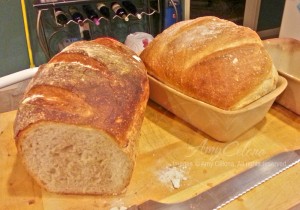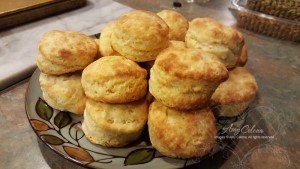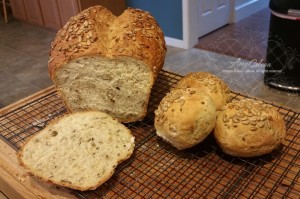 Okay, I have recently began keeping a written diary for my homemade breads. Why? They come out a little differently each time and I can never remember what I’ve done (actually I suffer from CRS–can’t remember sh*t). Add that to I don’t really measure anymore so when I get the question, ‘what is the recipe?’ Um, not sure, and then that is taken as I’m not willing to share… so not the case!
Okay, I have recently began keeping a written diary for my homemade breads. Why? They come out a little differently each time and I can never remember what I’ve done (actually I suffer from CRS–can’t remember sh*t). Add that to I don’t really measure anymore so when I get the question, ‘what is the recipe?’ Um, not sure, and then that is taken as I’m not willing to share… so not the case!
 So, that combined with the fact that I’ve officially lost my little notebook/diary and was ready to create another, when I figured that I will keep an ‘online diary’ here for anyone who is interested in my process. I’ll update next time I made it… if I make any major changes. I do need to do a video, I think!
So, that combined with the fact that I’ve officially lost my little notebook/diary and was ready to create another, when I figured that I will keep an ‘online diary’ here for anyone who is interested in my process. I’ll update next time I made it… if I make any major changes. I do need to do a video, I think!
So below is my basic recipe for white bread that I make at least once a week. Sometimes I make it in a rectangle loaf pan (shown right), sometimes as Italian loaves (shown above). Depends on my mood.
The loaves at the top were made in French bread loaf pans, similar to shown here on Amazon, and my biggest issue is the loaves running together in the middle. I don’t really like that, and don’t really want to make smaller loaves… but it takes up less room in the oven… and you can bake 2 easily at once…
Anyway, I’ve been watching YouTube videos on different shaping/scoring and am looking forward to trying them.

Italian Bread (white) with sesame seeds
Ingredients
Method
- Start this 10 minutes before you begin: Active dry yeast (not instant) requires hydrating.* Put the 2 tsp of yeast in the lukewarm water and let sit for 3 minutes. Use a small wisk to mix the softened yeast and water and let sit for about 10 minutes. *If you use Instant yeast, you will use less and not need to do this step.
- I have a heavy duty Kitchen Aid mixer. I put the water/yeast mixture in the mixer and add 5 cups of four and with a dough hook, let it mix for about 5 minutes.
- Add the 6th and 7th cup of flour slowly--mixer on the lowest speed--about 5 more minutes for each cup added. After the 7th cup, add the salt.
- After about 5 more minutes add the 8th cup of flour let it mix for 5-8 minutes. The dough will become very smooth and adhere as one ball, but still be sticky.
- Use a rubber spatula to remove the dough from the mixing bowl and turn it out onto a well-floured surface (I have a marble slab that I use).
- I kneed for an additional 15 minutes adding ~1/2 to 1 cup of additional flour depending on how soft/sticky the dough is.
- Prepare a very large bowl by adding 3 tablespoons of olive oil (*who am I kidding, I just splash some in...).
- Kneed the final dough into a ball--sticky enough to hold together cohesively and then roll it in the bowl to coat it on all sides with olive oil. Cover the bowl with plastic wrap and a towel and let rise in the oven or microwave where there is no draft.
- I let it rise the first time for at least 3 hours and then punch it down and roll into a ball again.
- Let it rise for 2 hours the second time and then divide to two loaves and shape for final proofing. I generally proof it on (or in) the stone or pan that I will final bake in. If you are adding sesame seeds, brush the top with egg white and water mixed, and sprinkle the sesame seeds.
- After rising ~30 minutes, I take out the middle rack (I bake on a lower rack) preheat the oven to 520 degrees F (takes at least 20 minutes on my oven) and put a cast iron skillet on the bottom of the oven.
- By ~1 hour, the final proofing has doubled and I score the tops and place in the oven. I pour about 2 cups of water in the cast iron skillet to create steam. Bake for 15 minutes (add water if it completely evaporates too soon).
- After the first 15 minutes, I turn the bread and turn down the oven to 440 degrees F for about 30 more minutes. (No more steam after the first 15 minutes.) If the tops start to get too dark, move it to a lower rack.
- I ended up with 2 loaves that were a smidgen over 2 lbs. each.
Notes
- Truth is, I rarely measure the flour--I did for the purposes of sharing this recipe, but I am looking for a consistency more than an exact measure. I also sift my flour, so that will affect measurements.
- I do not add the salt until the dough is no longer 'wet'. Salt retards yeast so I never mix it with water or even too soon into the mixing like I've seen told to do in some recipes.
- Total kneading time should be about 20 minutes--no less. I do count the mixing (after the 7th cup into the 20 minutes). More kneading the better.
- I bake at very high temperatures for a shorter amount of time and use steam in the first 10 minutes. This creates the hard crust and soft inside.
- I bake at very high temperatures in a gas fired convection oven. If you do this, you must ensure that you have the bread on a low enough rack so you don't scorch the top. The bread [from my lips to God's ears] will double in the oven in the first 10 minutes--be sure at the high temperature that you have it low enough on a rack. You might want to start in the middle and move it down after the first 15 minutes. I have it on one slot lower than center that I use.
- I freeze one (if one doesn't immediately disappear) after it sits for about 2 hours. It doesn't have to be room temperature--in fact it is better if its not before you freeze it.



